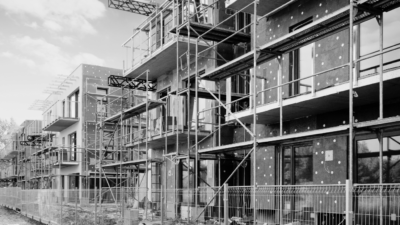The total number of Build to Rent homes under construction across the UK has increased by nearly 40 per cent, according to recent research analysis produced by Savills for the British Property Federation (BPF), which will be published quarterly as an interactive map on the BPF’s website.
There are now 139,508 Build to Rent homes either already completed, under construction or currently in planning. These homes described as being ‘new, high-quality and professionally-managed’ by BPF, will deliver an increase of 22 per cent on last year.
Compared with totals in the last quarter of 2017, data from the same period in 2018 shows that the number of completed homes has increased by 29 per cent, the number of homes under construction by 39 per cent and the number in planning by 11 per cent, equalling a total of 22 per cent overall, according to BPF.
It appears that developments in the regions are being approved more readily now, with 24,010 homes under construction in the regions and 19,304 in London, according to the recent data.
Also, the total number of completed homes across regional areas of the UK has caught up with London, with 14,615 completed homes in the regions and 14,801 in the capital.
What has caused this?
BPF reference the changes in housing policy last year as a contributor to the data found in their research covering Q4 of 2018. This includes the government’s National Planning Policy Framework that now references Build to Rent specifically, which provides guidance for local authorities when dealing with planning applications from the sector.
While 30 per cent of completed Build to Rent homes have been delivered through Permitted Development Rights (PDR) across London, PDR makes up less of the future pipeline in London with only nine per cent currently under construction and in planning using PDR, according to the latest data from BPF and Savills.
The impact
The types of buildings offered through Build to Rent have diversified due to its growth in the UK, the report explains. 15 per cent of schemes in the pipeline now include houses, rather than simply high-rise apartments.
The sector has committed to offering longer-term family-friendly tenancies, as requested by the Prime Minister Theresa May in 2018, as she called for the entire private rental sector, including both the buy to let and Build to Rent sectors, to ensure more stability and predictability for renters.
Ian Fletcher, director of real estate policy at the BPF, said: “With the revised National Planning Policy Framework, asking local authorities to identify how many new rental homes their respective areas need, the future should remain bright for Build to Rent. This has never before been enshrined in UK planning policy and will only add to the growing number of local authorities that are seeing the benefits of Build to Rent in adding much-needed housing supply across the UK.
“PDR was a policy designed in response to planning policy failure, where too many office buildings sat empty for far too long. Clearly, for Build to Rent, PDR has supported kick-starting the sector’s growth, but its use has decreased, and this trend is likely to continue.”
Jacqui Daly, director, Savills residential investment research and strategy, said: “It’s no surprise that permitted development accounts for such a large share of completed schemes because it has provided an easy springboard for Build to Rent.
“Ultimately, however, investors need scale – ideally schemes of 250-plus units – and that’s generally impossible to achieve by converting an existing building. Changes to planning will make it much easier to get bespoke developments off the ground, which will match investor demand for sizeable portfolios offering long-term stable income streams.”
























Comments